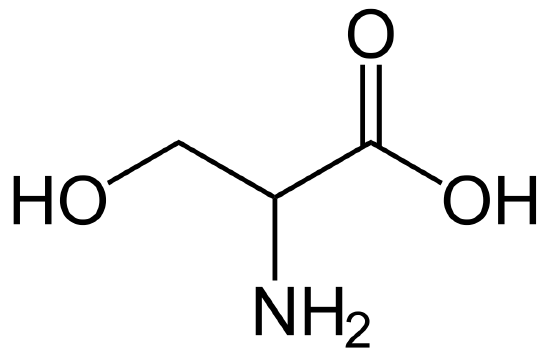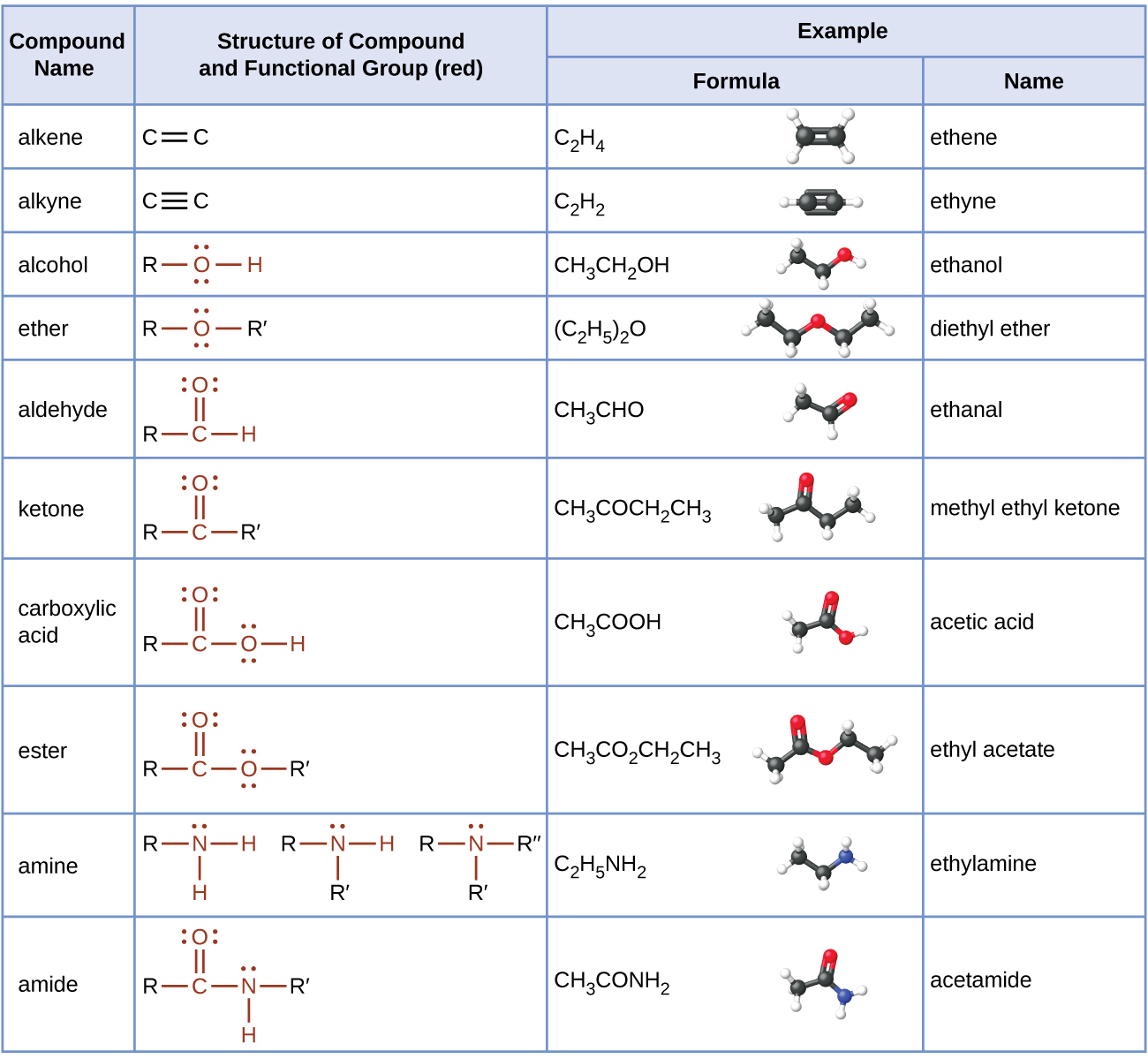1.5: Organic Compounds with Functional Groups
- Page ID
- 364636
- to describe functional groups and explain why they are useful in the study of organic chemistry.
- to identify and name common functional groups.
Previously, we considered several kinds of hydrocarbons, compounds that consist of only carbon and hydrogen. Many organic compounds contain additional elements present as part of functional groups. A functional group is a specific structural arrangement of atoms or bonds that imparts a characteristic chemical reactivity to the molecule. If you understand the behavior of a particular functional group, you will know a great deal about the general properties of that class of compounds. Some common functional groups are listed in Table \(\PageIndex{1}\). Each family is based on a common, simple functional group that contains an oxygen atom, a sulfur atom, or a nitrogen atom.
| Organic molecules can be very large, often molecules contain more that one functional group. |
|---|
Consider the amino acid serine, shown in Figure \(\PageIndex{1}\). Three functional groups are present in the molecule: an amine, an alcohol, and a carboxylic acid.

Figure \(\PageIndex{1}\). Line formula for the amino acid serine.
Key Takeaways
- The functional group, a structural arrangement of atoms and/or bonds, is largely responsible for the properties of organic compound families.
- Compounds can contain one or more functional group.
Concept Review Exercises
-
What is the functional group of an alkene? An alkyne?
-
Does CH3CH2CH2CH2CH2CH2CH2CH2CH2CH2CH3 have a functional group? Explain.
Answers
-
carbon-to-carbon double bond; carbon-to-carbon triple bond
-
No; it has nothing but carbon and hydrogen atoms and all single bonds.



